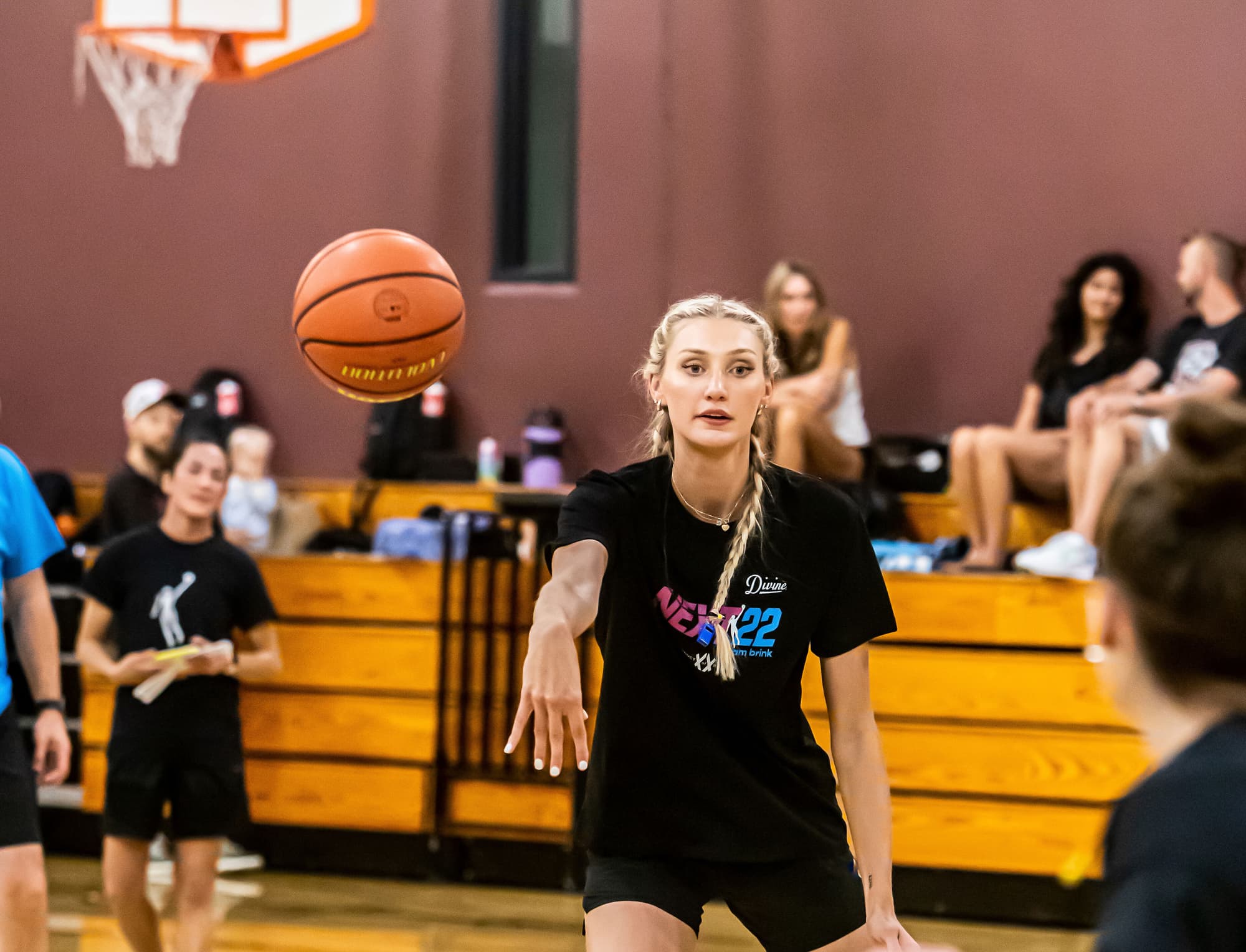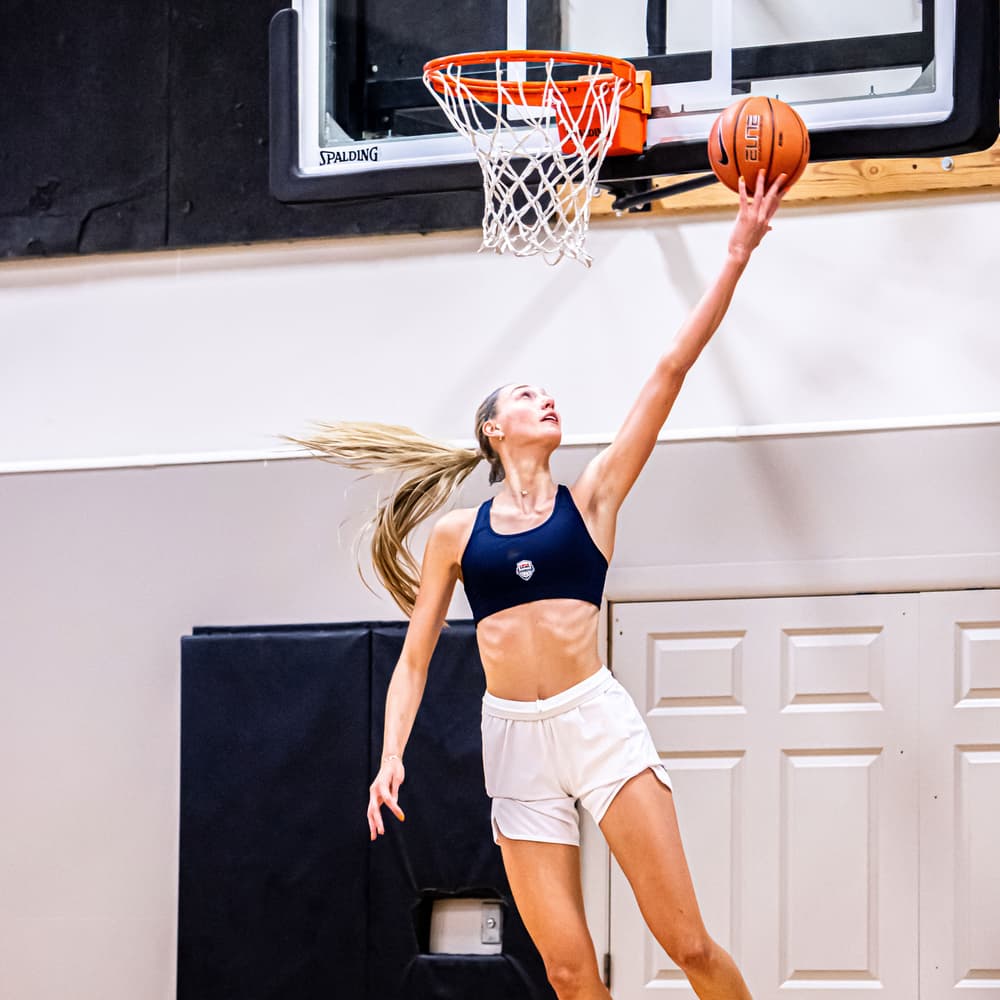Cameron Brink achieves visual freedom with the EVO implantable lenses
Basketball Player
Basketball Player

Vision struggles on and off the court
Cameron Brink, a star on the women’s basketball team of Stanford University, faced the daily struggles of glasses and contacts, impacting both her personal and professional life.

EVO ICL: the game-changer
Join her in experiencing the world with newfound clarity and confidence. For those on the fence about EVO ICL, Cameron passionately encourages,
"Talk to your eye doctor today. It's truly a life-changing procedure!"
Ready to embrace a life without the hassle of glasses and contacts? Discover the possibilities with EVO ICL. Call an EVO advisor today to schedule an appointment with an eye doctor near you, and embark on your own journey towards visual freedom!
Prêt à découvrir les lentilles implantables (ICL) et la liberté visuelle qu'elles vous offrent ? Trouvez votre médecin spécialiste des ICL.
Informations de sécurité importantes
Denken Sie daran, dass die implantierbaren EVO Visian® Collamer®-Linsen (ICL) von der zuständigen Gesundheitsbehörde zugelassen wurden, was bedeutet, dass sie für sicher und wirksam befunden wurden. Wie bei allen Eingriffen sind Risiken zu berücksichtigen. Wenn Sie Fragen oder Bedenken haben, besprechen Sie diese am besten mit einem zugelassenen Arzt für implantierbare EVO Visian® Collamer®-Linsen (ICL). Die EVO Visian ICL-Linsenproduktreihe umfasst die EVO Visian ICL, die torische EVO Visian ICL, die EVO+ Visian ICL, die torische EVO+ Visian ICL und die Visian ICL und dient zur Korrektur/Reduktion von leichter bis starker Kurzsichtigkeit (-0,5 bis -20,0 Dioptrien (dpt)) und zur Korrektur/Reduktion von Kurzsichtigkeit bei Patienten mit bis zu -20 dpt mit höchstens 6,0 dpt Astigmatismus. Die Visian ICL dient zur Korrektur/Reduktion von leichter bis starker Weitsichtigkeit (+0,5 bis +10,0 Dioptrien(dpt)) und zur Korrektur/Reduktion von Weitsichtigkeit bei Patienten mit bis zu +10 dpt mit höchstens 6,0 dpt Astigmatismus. Die EVO Visian ICL-Produktreihe dient zur Korrektur/Reduktion der Kurzsichtigkeit bei Erwachsenen im Alter von 21-60 Jahren mit Werten von -0,5 dpt bis -20,0 dpt auf Brillenebene und Korrektur/Reduktion der Weitsichtigkeit bei Erwachsenen im Alter von 21-45 Jahren mit Werten von +0,5 dpt bis +10,0 dpt auf Brillenebene. Mit einer Tiefe der vorderen Kammer von 2,8mm oder mehr bei Kurzsichtigkeit und 3,0mm bei Weitsichtigkeit, gemessen vom Hornhautendothel zur vorderen Linsenkapsel. Der erweiterte Altersbereich von 45 bis 60 Jahren gilt nur für die kurzsichtige EVO Visian ICL-Produktreihe und nur in Ländern im Zuständigkeitsbereich der benannten Stellen der EU, in denen die CE-Kennzeichnung anerkannt wird (d.h. EU, EWR, EFTA). Die gegenwärtig im Bestand befindliche EVO Visian ICL-Produktreihe ist noch nicht mit der aktualisierten Gebrauchsanleitung mit diesem neuen Wortlaut versehen, doch wird dies im Laufe der Zeit geschehen. Die EVO Visian ICL-Operation macht eine Lesebrille nicht überflüssig, selbst wenn Sie bisher keine Lesebrille getragen haben. Die EVO Visian ICL-Operation stellt eine Alternative zu anderen refraktiven Operationen wie LASIK (Laser-in-situ-Keratomileusis), photorefraktive Keratektomie (PRK), Inzisionsoperationen oder anderen Mitteln zur Korrektur von Kurzsichtigkeit und Weitsichtigkeit wie Kontaktlinsen und Brillen, dar. Die torische EVO Visian ICL dient zur Korrektur oder Reduzierung eines möglichen Astigmatismus bis zu 6,0 dpt (die EVO Visian ICL dient nicht zur Behandlung von Astigmatismus). Die Implantation einer EVO Visian ICL ist ein chirurgischer Eingriff und daher mit potenziell schwerwiegenden Risiken verbunden. Die nachstehenden potenziellen Komplikationen/Nebenwirkungen sind allgemein im Zusammenhang mit refraktiven Operationen berichtet worden: weitere Operationen, Kataraktbildung, Verlust des bestkorrigierten Visus, erhöhter Augeninnendruck, Zellverlust an der innersten Hornhautoberfläche, Bindehautreizung, akute Hornhautschwellung, anhaltende Hornhautschwellung, Endophthalmitis (Infektion des gesamten Auges), signifikante Blendungsempfindlichkeit und/oder Lichthöfe, Hyphäma (Blut im Auge), Hypopyon (Eiter im Auge), Augeninfektion, Verlagerung der Visian ICL, Makulaödem, nicht reagierende Pupille, Pupillenblock-Glaukom, schwere Augenentzündung, Iritis, Uveitis, Glaskörperverlust und Hornhauttransplantat. Bevor Sie eine EVO Visian ICL-Operation in Betracht ziehen, sollten Sie sich einer vollständigen Augenuntersuchung unterziehen und die EVO Visian ICL-Operation, insbesondere die potenziellen Nutzen, Risiken und Komplikationen, mit Ihrem Augenarzt besprechen. Erkundigen Sie sich auch nach der erforderlichen Heilungsdauer nach der Operation.
Sélectionnez votre région
Latin America
Citazione
1. Patient Survey, STAAR Surgical ICL Data Registry, 2018
2. Sanders D. Vukich JA. Comparison of implantable collamer lens (ICL) and laser-assisted in situ keratomileusis (LASIK) for Low Myopia. Cornea. 2006 Dec; 25(10):1139-46.
3. Naves, J.S. Carracedo, G. Cacho-Babillo, I. Diadenosine Nucleotid Measurements as Dry-Eye Score in Patients After LASIK and ICL Surgery. Presented at American Society of Cataract and Refractive Surgery (ASCRS) 2012.
4. Shoja, MR. Besharati, MR. Dry eye after LASIK for myopia: Incidence and risk factors. European Journal of Ophthalmology. 2007; 17(1): pp. 1-6.
5a. Lee, Jae Bum et al. Comparison of tear secretion and tear film instability after photorefractive keratectomy and laser in situ keratomileusis. Journal of Cataract & Refractive Surgery , Volume 26, Issue 9, 1326 - 1331.
5b. Parkhurst, G. Psolka, M. Kezirian, G. Phakic intraocular lens implantantion in United States military warfighters: A retrospective analysis of early clinical outcomes of the EVO Visian ICL. J Refract Surg. 2011;27(7):473-481.


